The greater adjutant stork is one of the most endangered bird species. Its habitat is in the Brahmaputra valley of Assam. The birds are found mostly in three districts of Assam — Guwahati, Morigaon, and Nagaon.
The wetlands in and around Guwahati were home to these storks, which depended on them for food, water and shelter. But the biodiversity hotspots have given way to buildings due to rapid urbanisation and the habitat loss is a major threat for the survival of this bird species.
Today, the greater adjutant stork is described as endangered on the Red List of Threatened Species by the International Union for Conservation of Nature.
Earlier, the State capital had the largest concentration of greater adjutant storks in the country. But with their habitat usurped by concrete, and the loss of food sources, these large birds — some almost five feet tall — are now seen only at a garbage dumping site near the Deepor Beel Wildlife Sanctuary, a Ramsar site.
Between October and February is the time when fish and other live prey can be found in abundance, and this period is also the breeding season for the greater adjutant stork. During the non-breeding season, these birds forage in urban waste disposal sites.
Principally carnivorous, the greater adjutant stork preys on fish, frogs, snakes and other reptiles, eels, birds, and, also, carrion.
Seasonally dependent on wetlands for foraging and tall trees for roosting and nesting, the storks suffer from the ongoing destruction of habitat through encroachment, overfishing and drainage projects. In Guwahati city, most of the roosting trees are located on private land and many of them have been felled or are being cut down.
Though the species has received legal protection in India, in many areas, people drive out these birds as they may carry pieces of rotting meat to feed their hatchlings and because their droppings carry a strong odour.

Photo:
RITU RAJ KONWAR
Stark reality: Once a city with abundant wetlands in and around it, much of it has been encroached upon by consturction sites and garbage dumps. Adjutant Storks are not migratory birds and these wetlands are the only home they know.
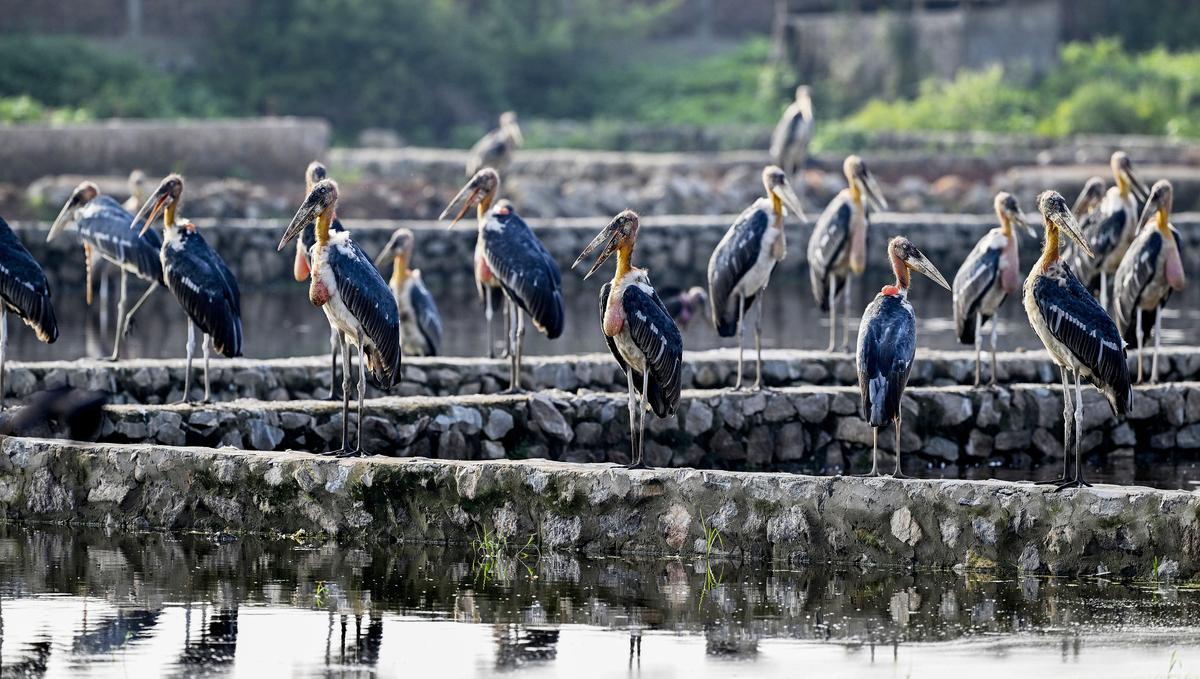
Photo:
RITU RAJ KONWAR
Shrinking space: Once used to be a wetland and feeding for Adjutant Storks now encroached by human.
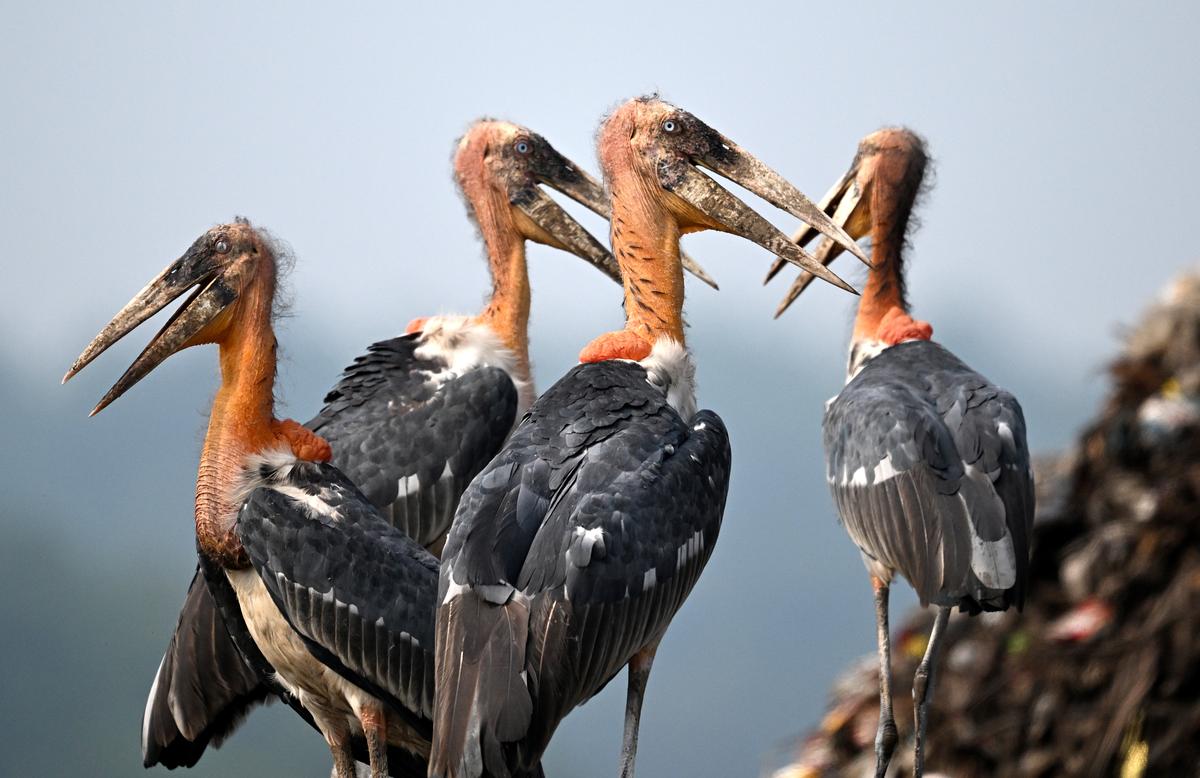
Photo:
RITU RAJ KONWAR
Foraging flock: Greater Adjutant storks wait for food in a garbage dumping site in Guwahati.
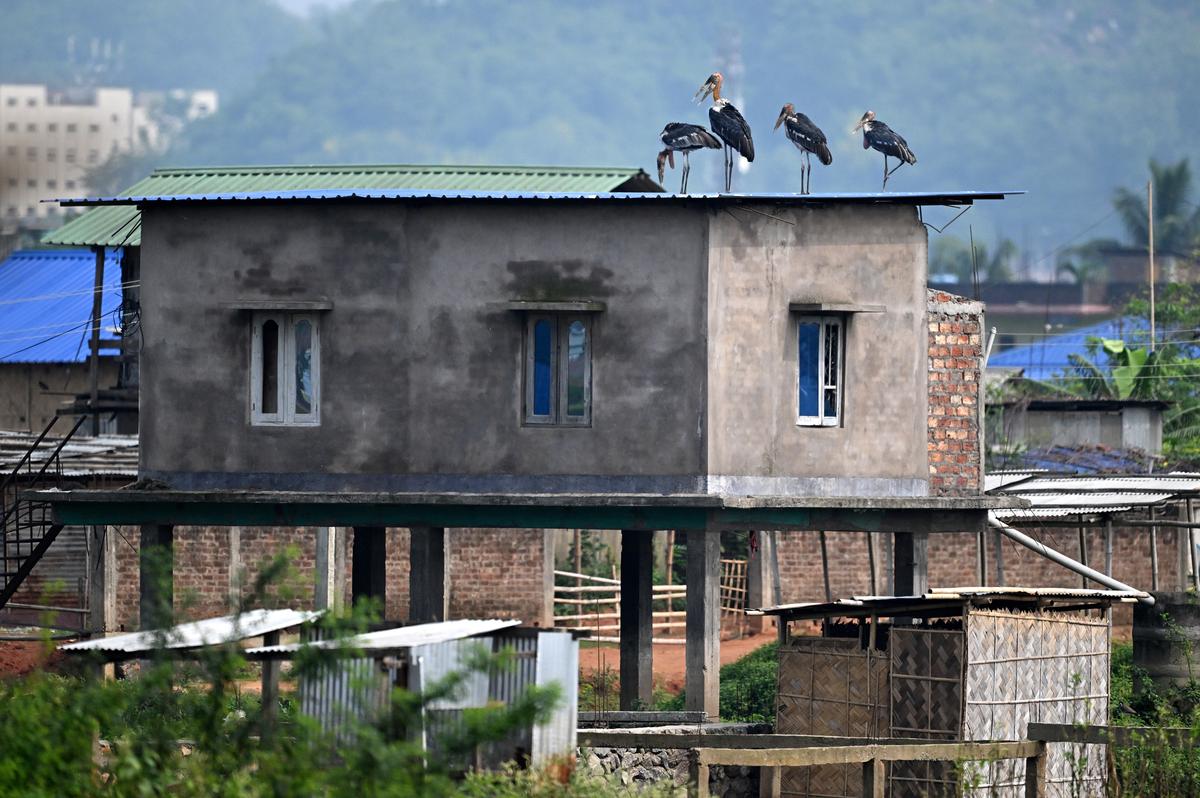
Photo:
RITU RAJ KONWAR
Lost homes: With many trees having been cut down, storks take shelter on top of a roof.
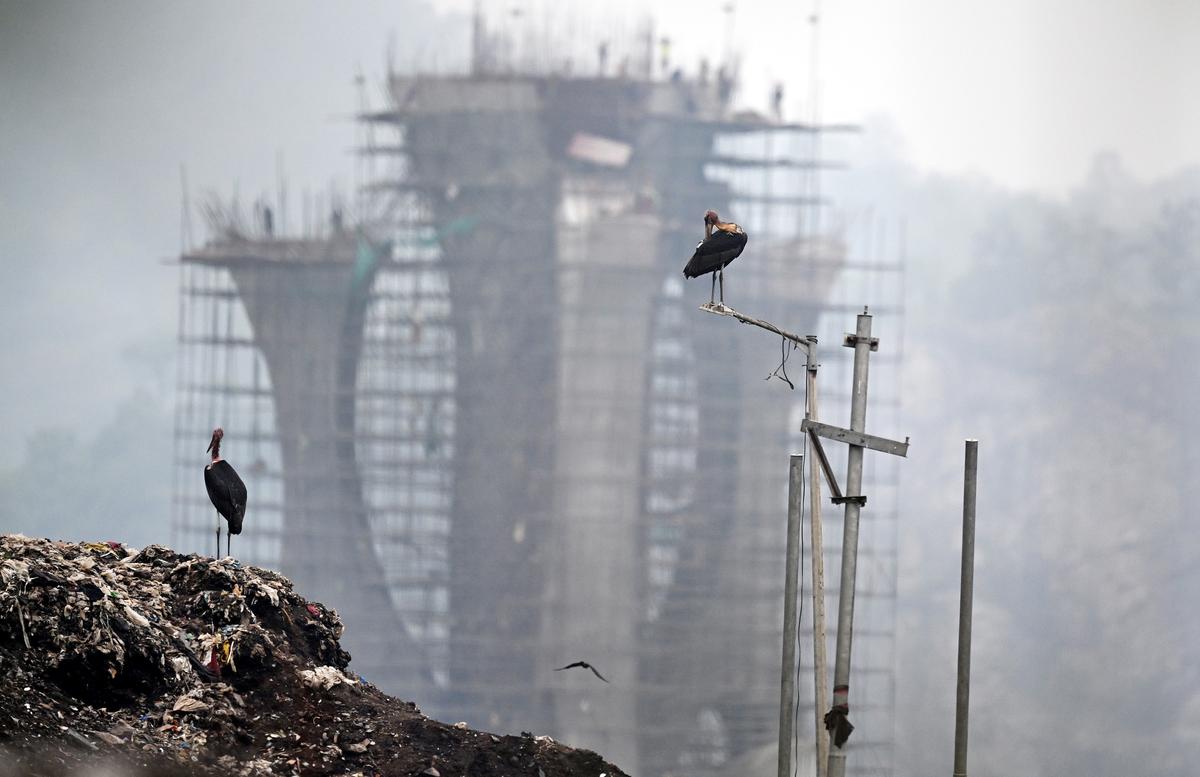
Photo:
RITU RAJ KONWAR
Rise and fall: Construction in and around the green belt have encroached upon the natural habbitat of these birds. Two Adjutant storks relaxing in front of a newly constructed high raised building in green belt area of Guwahati.

Photo:
RITU RAJ KONWAR
Scavenging hunter: A Greater Adjutant Stork arrives to feed on a garbage dumping site near Deepor Beel wildlife sanctuary in Guwahati.

Photo:
RITU RAJ KONWAR
At risk: Hungry Greater Adjutant storks wait at a garbage dumping site in Guwahati.
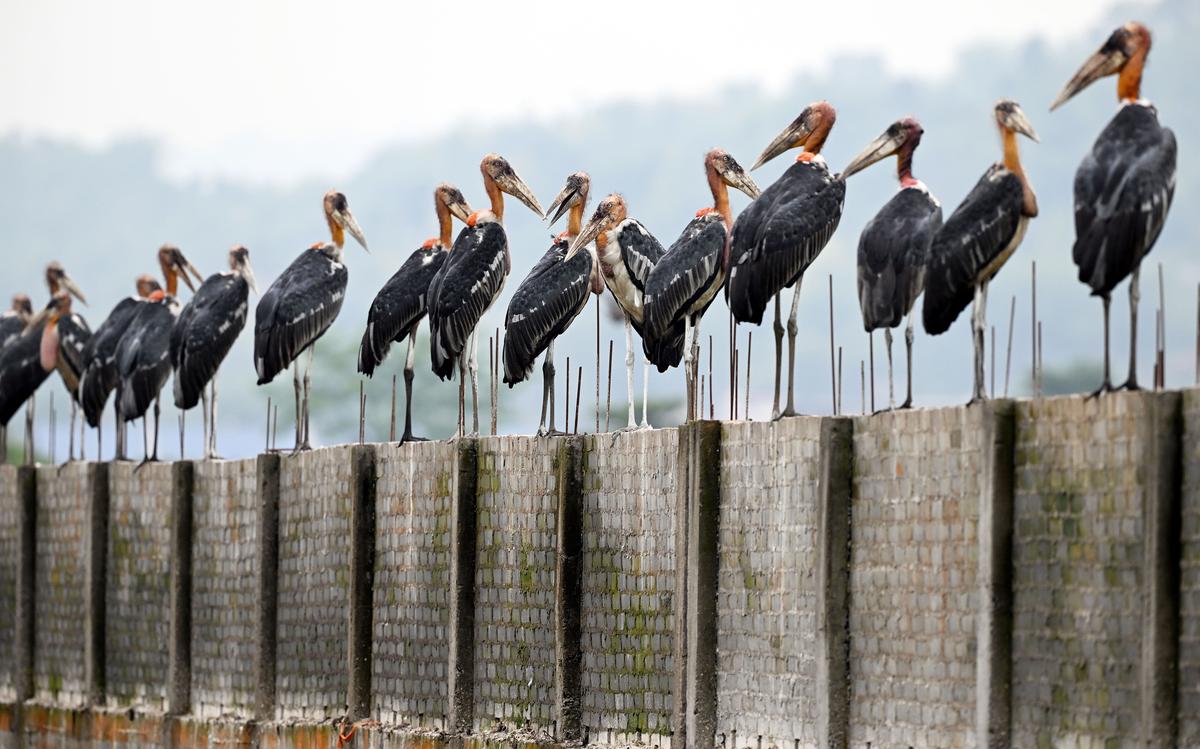
Photo:
RITU RAJ KONWAR
Shrinking space: Edged out: a group of Greater Adjutant Storks waiting on a boundary wall since morning for garbage carrying vehicles to arrive at a dumping site near Deepor Beel wildlife sanctuary in Guwahati. Ritu Raj Konwar
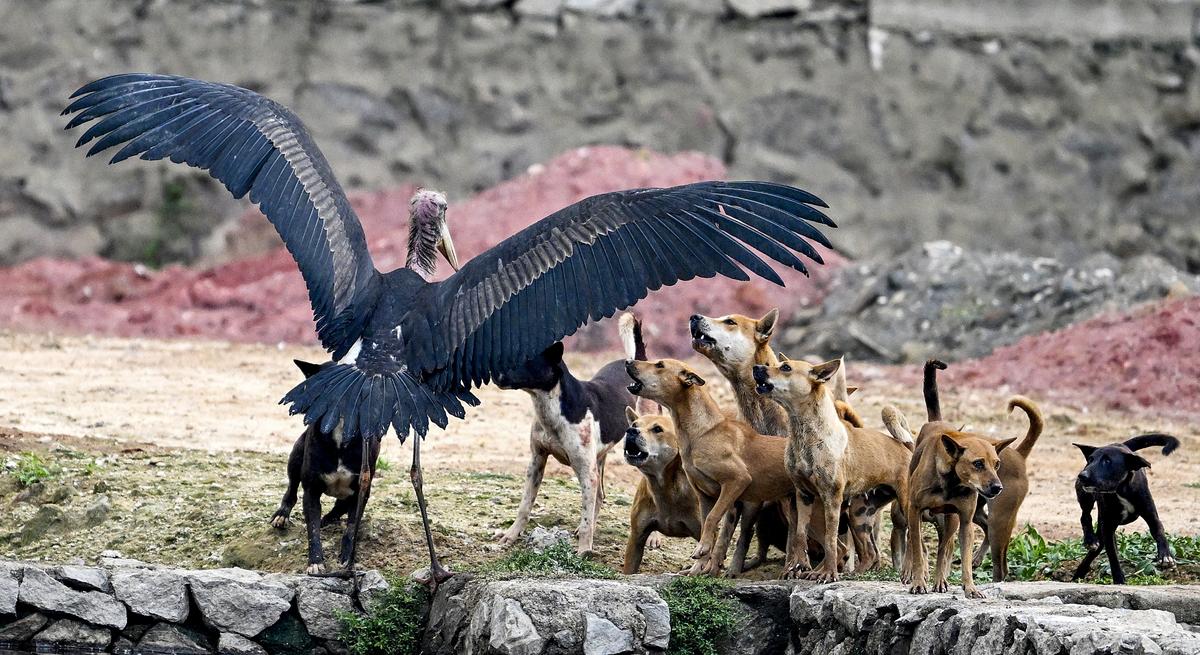
Photo:
RITU RAJ KONWAR
Fight or flight: A face off with a pack of hungry dogs can sometimes be a one sided affair. With wetlands usurped, giving way for garbage dumps, or consturction sites which is usually frequented by dogs living next to human settlements, the storks have to face off with land animals such as dogs competing for the same source of food.
